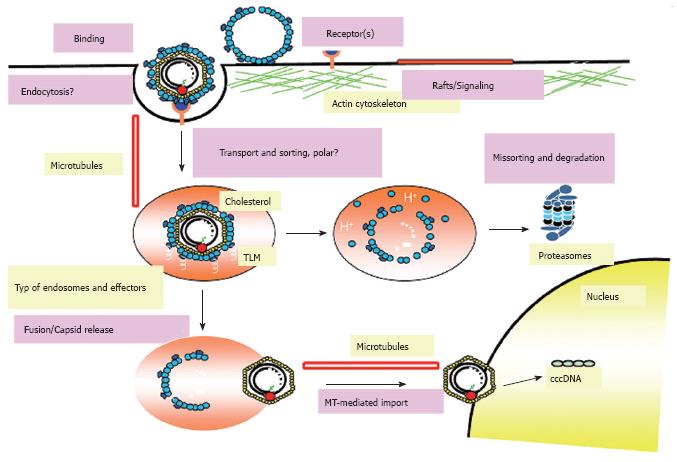Copyright
©2007 Baishideng Publishing Group Co.
World J Gastroenterol. Jan 7, 2007; 13(1): 91-103
Published online Jan 7, 2007. doi: 10.3748/wjg.v13.i1.91
Published online Jan 7, 2007. doi: 10.3748/wjg.v13.i1.91
Figure 6 Current model for entry and intracellular trafficking of DHBV.
The hepadnaviral life cycle starts with the attachment of virions to specific binding sites on the surface of hepatocytes mediated by the preS region of the large viral envelope protein L. Afterwards the virus enters the cell via endocytosis and resides in an endocytic vesicle which is transported in a MT-dependent and probably polar fashion. The endosomal release of the incoming particle requires the activity of the vacuolar H+-ATPase and presumably the cholesterol of the viral envelope. After release, the particle is transported in a MT-dependent fashion mediated by dynein/dynactin to the nucleus and initiates infection after release of the viral genome at the nuclear membrane or within the nucleus. However, the majority of viral particles is missorted and degraded by the proteasome and other cellular proteases.
- Citation: Funk A, Mhamdi M, Will H, Sirma H. Avian hepatitis B viruses: Molecular and cellular biology, phylogenesis, and host tropism. World J Gastroenterol 2007; 13(1): 91-103
- URL: https://www.wjgnet.com/1007-9327/full/v13/i1/91.htm
- DOI: https://dx.doi.org/10.3748/wjg.v13.i1.91









